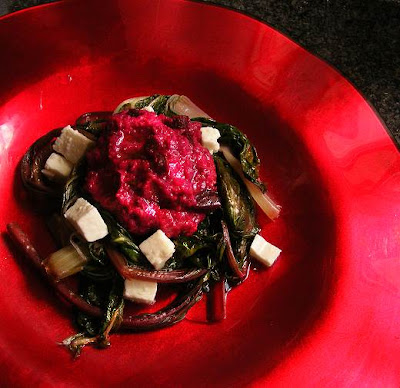 |
| Chermoula-style Red Pepper & Cumin Dip, and Avocado, Crème Fraîche & Coriander Dip |
Something else these dips have in common: both recipes are the work of my two younger sisters, who magicked them, independently, from their kitchens during a week of feasting. (For the first time in three years my entire family - my mum, my three sisters, my three brothers-in-law, and many cousins - is assembled in Hout Bay, Cape Town, and we have spent the last few days happily shuttling between houses, shuffling cousins between beds, and filling ourselves with festive cheer).
I liked these dips so much that I disgraced myself by licking out the bowls. Then I went home and made them myself, but they were demolished by my teens before my tongue got within slurping distance.
Every flavour my tastebuds crave - the zing of lemon, the sting of garlic, the sweet smokiness of the roasted peppers, the stealthy warmth of cumin - is contained in these recipes, and I can't help being intrigued that all three of my sisters adore the same flavours. Is this genetic, I wonder? It can't be that we were raised in the same household: in the 60s and 70s, when we were kids, coriander, raw garlic and cumin and other newfangleds were neither available nor on the family menu.
The first recipe, which is reminiscent of a Moroccan chermoula mixture, uses Peppadews, which are small, mild-tasting bottled peppers. If you can't get these, use bottled red chillies, or any similar heat-producing agent, such as Tabasco sauce or cayenne pepper, in quantities to suit your personal heat-meter. Please use very fresh powdered cumin and paprika (both spices start to taste dusty as they age) and remove all the stalks from the herbs before you chop them.
My sister served this in dollops over a bowl of creamy cold crème fraîche. (She says this paste is lovely with fresh fillets of fish: smear the paste on the skinless side of the fish and bake in a moderate oven until the fish is done and the topping just bubbling.)
The second dip is similar to a guacamole but fresher, lighter, zingier and made utterly delicious by a lot of crunchy fresh coriander. It came about, says my (other) sister, because she had only one usable avocado to mix with a lot of crème fraîche and coriander. (I don't know what is going on with South Africa's usually bountiful avocado crop right now, but I can tell you that they cost a staggering R12 each right now, and that they are downright puny.)
Red Pepper, Cumin and Garlic Dip
6 ripe red peppers [capsicums or bell peppers]
2 cloves garlic, peeled and sliced
3 bottled Peppadews, drained and sliced (or a bottled chilli pepper, or Tabasco sauce, to taste)
2½ tsp (12.5 ml) powdered cumin
1 tsp (5 ml) paprika
1/3 cup (80 ml) olive oil
the juice of a lemon
the finely grated zest of half a lemon
½ cup (125 ml) finely chopped fresh coriander leaves [cilantro]
½ cup (125 ml) finely chopped fresh flat-leaf parsley leaves
salt and freshly ground black pepper
Heat the oven to 180°C. Place the peppers, whole, on a baking sheet covered with a piece of tin foil. Bake for 45 to 60 minutes, or until they have collapsed and blistered. Turn off the heat and let them cool completely in the oven.
 |
| Bake the peppers until they're blistered and soft. |
Add the garlic, Peppadews, cumin, paprika, olive oil and lemon juice, and whizz to a paste. If the mixture is too thick to turn the blades, add a little water or lemon juice.
Now add the lemon zest and finely chopped coriander and parsley, and press the pulse button once or twice so that the mixture is just combined (the herbs should retain a crunch). Season with salt and pepper and decant into a pretty bowl.
Serves 6-8, as a snack
Avocado, Crème Fraîche & Coriander Dip
1 large avocado
250 g (1 tub) crème fraîche
the juice of 1 small lemon
2/3 cup (125 ml) very finely chopped fresh coriander leaves [cilantro]
salt and freshly ground black pepper
Halve the avocado, remove the pip and scoop out the flesh. Place in a food processor fitted with a metal blade and add the crème fraîche and lemon juice. Whizz to a smooth paste. Tip in the coriander leaves and pulse once or twice, or until the herbs are finely minced. Season with salt and pepper and decant into a bowl.
Serve these dips with a bowl of olives, iced celery sticks, cucumber discs and feta cheese, if you're low-carbing, or with hot pita bread or toasted baguettes if you're not.
Serves 6-8, as a snack























